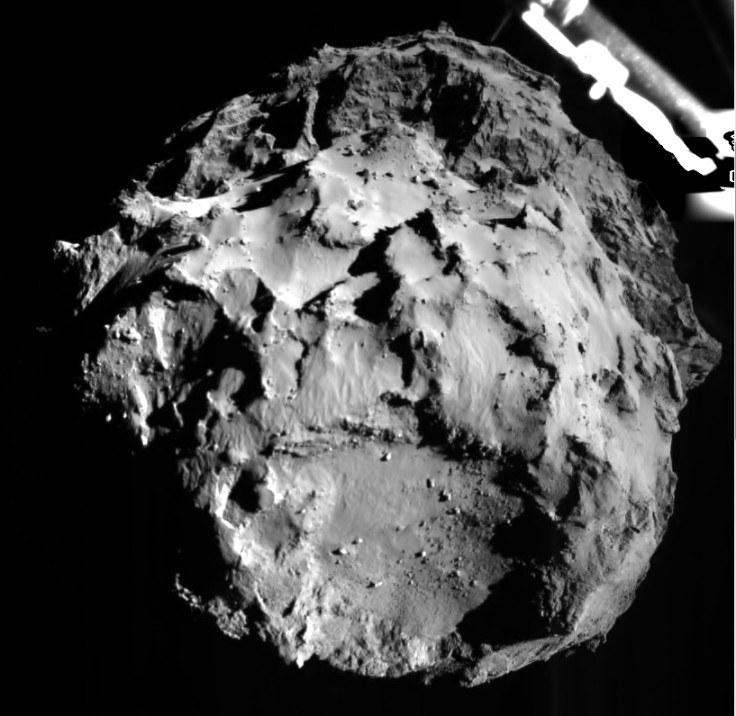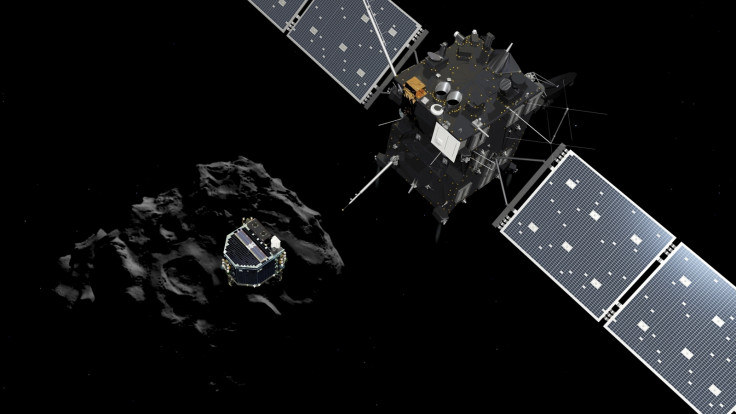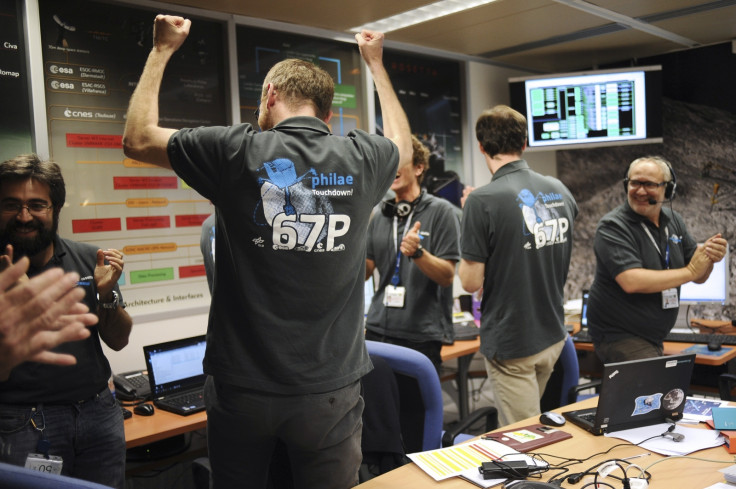Philae Comet Landing: How Rosetta Mission Pinpointed a Speeding Bullet 500,000,000 Kilometres Away

The Philae robot probe landing on a comet has marked a new era in history and "a big step for human civilisation", as described by European Space Agency's director general.
But for those who are not within the scientific community, the way in which the Philae has landed on the surface of Comet 67P/Churyumov–Gerasimenko, after successfully leaving Rosetta last night, has been likened to landing a washing machine on a speeding bullet.
In a bid to answer all the questions you may have, but are too scared to ask, IBTimes UK asked me to explain some of the most pertinent queries behind the historic feat.
How do the radio signals get from Philae to Earth?
The Philae space probe is currently 510 million kilometres away, perched on the surface of a 2km wide lump of ice and rock named 67P/ Churyumov-Gerasimenko that is hurtling towards the inner solar system at 18 kilometres a second.
We know this because Philae has been transmitting radio signals back to us, beaming the electromagnetic transmissions through the vacuum of space to receivers here on Earth.
Philae itself doesn't have the power to transmit over such distances – to keep its mass to a manageable 100kg, non-essential components such as powerful radio transmitters were left off – but it is able to communicate with Rosetta, the mothership that carried it on its meandering 10 year journey to the comet.
Rosetta can then relay the signals back across the enormous distance towards its home planet.
Even at the speed of light, the radio transmissions take nearly half an hour to reach Earth.
For this reason, real-time control of the Philae lander wasn't possible, and the whole 10 hour descent had to be done automatically using pre-programmed procedures.
How did they know what direction to send Rosetta?
We've known about the comet 67P/Churyumov-Gerasimenko for some time now – it was discovered in 1969 by two Russian scientists, for whom the comet is named.
Since then, its six and a half year long orbit around the Sun has been well known. It never ventures very far from its host star, wandering out about as far as the orbit of Jupiter, and never getting closer than the orbit of Earth.
Like virtually all comets, it orbits in a plane called the 'ecliptic', the imaginary flat disc on which all the planets orbit.
The regularity of 67P's orbit means that scientists are able to predict (to within about 100km) where the comet will be at any point in the future.
This meant that the mission planners could plot a route that would intercept the comet at some point in the future.
Once Rosetta got within 24 million kilometres of 67P, onboard cameras helped make any last-minute course corrections.
However, sending a spacecraft to another celestial body is not as simple as aiming at it and firing the boosters. Matching speeds with another object in space is often very difficult, and can result in you shooting past it (or it shooting past you) if your calculations are wrong.
How did it reach such fast speeds?

It takes an enormous amount of energy (and hence fuel) to escape Earth's gravitational pull. Rosetta was carried into orbit by an Ariane 5 rocket, but had its own thrusters to propel itself from there.
Matching speeds with 67P on its own would have been impossible however, since the amount of fuel necessary would have been prohibitively heavy.
Instead, Rosetta used 'gravity assist' manoeuvres to add to its speed – by closely 'sling-shotting' around planets, it stole a little orbital velocity from them to add to its own.
Launched in March 2004, Rosetta visited Mars, then went back to Earth (briefly being misidentified by astronomers as an asteroid), then the asteroid 2867 Šteins 5, then back to Earth again, then the asteroid 21 Lutetia, before finally reaching 67P in August of this year.
This complicated path meant that when it reached the comet it was travelling at approximately the same speed and direction as it. Even then it had to precede its rendezvous with several deceleration 'burns', firing its thruster so that it went from travelling at 775 metres per second relative to the comet to a more sedate 8 metres per second.
How did they manage to line Rosetta up with the comet to land the Philae lander?

Comets are fairly small, depending on how you measure them. 67P is (as far as we know) a fairly typical one, with an irregular lumpy shape, and measuring two or three kilometres across, depending on which axis you measure it along.
The reason we can see some comets in the sky from great distances away is because the Sun causes them to lose mass as they fall into the middle of the solar system.
Much of the bulk of the comet becomes gas, and is blown away in a massive, spectacular tail by the solar radiation. The solid nucleus of the comet is a tiny speck at its head by comparison.
The comet's tiny size means that the surface gravity is about 100,000 times weaker than on Earth. If you were to stand on the surface, it wouldn't be a good idea to jump, as you'd never come back down again if you did.
This means that putting Rosetta into orbit 30 kilometres above it took some tricky manoeuvring over the course of several weeks.
Even more perilous was Philae's descent.
The lander detached itself from its mothership and drifted towards the comet at walking pace, landing 7 hours later. Getting to the comet wasn't a problem - the problem would be staying landed in the comet's incredibly weak gravitational field.
Philae had a number of tricks to stay stuck to 67P's surface. The legs were designed to dampen the impact of landing, to prevent bouncing. Ice screws were fitted to the bases, to attach it to the surface. A thruster on the top of the lander fired, to reduce the bounce.
And finally, two harpoons were intended to fire into the surface to anchor it, although these appear not to have done so due to a fault.
Nevertheless, Philae made it to the surface safely, and has stayed there.
What will happen to Rosetta & Philae after the mission?

Philae will remain on the surface of 67P, accompanying it as it completes its swing around the Sun.
During this time it will drill into the surface of the comet and extract samples to analyse, transmitting its results back, via Rosetta, to scientists on Earth.
Comets are frozen remnants from the origins of the solar system, and it is hoped this analysis will help reveal some of the secrets of its formation 4.5 billion years ago.
Philae will also be searching for organic molecules and amino acids, which will help scientists assess what contribution comets may have had in the origins of life on Earth.
Rosetta will also analyse the comet from orbit over the course of a year, using a suite of onboard sensors. If it has any fuel remaining after this, it may attempt some high-risk experiments, like flying through gas streams emitted from the comet.
After it dies, it will likely remain in orbit around 67P, tethered to the comet by its weak gravitational tug.
On the surface, Philae will continue to function until its electronics fail, something likely to happen early next year.
After that, it will remain there, possibly for several more laps around the Sun, before the part of the surface that it sits on is eroded away, and it is flung off into space.
Donald Sinclair is a former physics teacher and lecturer who now works as a medical physics researcher / imaging scientist in cancer research at one of London's top hospitals.
© Copyright IBTimes 2025. All rights reserved.





















